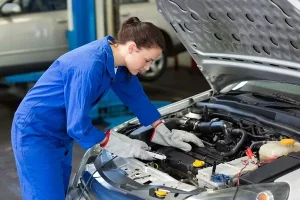Maintenance Tips For Older Vehicles

Whether your old vehicle was passed down to you or just paid off, it is worth keeping on the road for as long as possible. The key to extending your car’s life is regular maintenance.
This includes reading your owner’s manual and going to a reputable mechanic at the recommended times for service. Also, checking for fluid leaks and other potential problems.
Check Your Brakes
Your vehicle’s brakes are essential for your safety and the safety of those around you on the road. Your car’s braking system is a complex system that needs precise adjustment to ensure proper performance. This makes it one of the most important maintenance tasks to keep up with.
It’s also important to check your brake fluid regularly. Typically, your car’s owner manual will provide the recommended amount to add to your vehicle’s master cylinder. Always use the specific type of brake fluid specified by your car’s manufacturer.
Some warning signs of problems with your car’s braking system include squeaking when braking, the need to press harder on the brake pedal, and the car pulling to one side when you stop it. Additionally, if you notice a vibration when braking, this is a sign that the rotors are wearing out or have become warped. Flushing the brake fluid can help to prevent this from occurring. In addition, resurfacing your rotors can extend their life and make your brake pads last longer.
Change Your Oil
As you probably know, changing your oil is crucial to maintaining your older vehicle. You don’t have to change it as often as a new car, but regular maintenance will help your engine last longer. It’s important to follow your owner’s manual for your specific vehicle, as the manufacturer may recommend a different interval depending on driving conditions.
If you drive short trips, frequently drive in dusty or dirty conditions, or carry heavy loads, your oil may need to be changed more frequently than a standard schedule. Also, pay attention to warning signs such as low oil pressure or a malfunctioning oil level indicator light.
Remember, old oil can cause engine damage by causing rusting and friction. Keeping up with routine oil changes will save you from the cost of major engine repairs in the future. It’s also a good idea to check your oil color on a regular basis. If it has a milky appearance, it could mean that coolant is leaking into your engine.
Change Your Coolant
Coolant, or antifreeze as it is often called, plays a critical role in keeping the engine from overheating. If you notice that your vehicle’s temperature gauge is frequently above the red line or that it has a burning smell, it may be time for a coolant flush.
Coolants deteriorate over time, and this can cause it to no longer protect your engine from overheating. In addition, acid from deteriorating coolant can also damage your water pump and aluminum components of the engine.
To check the coolant level, simply pop the hood of your car and locate the radiator fluid reservoir tank. It is usually a transparent tank with a MAX maximum and MIN minimum line marked on it. Be sure to wear rubber gloves and safety glasses when working with antifreeze, as it can be toxic. Be sure to dispose of it properly when you’re done with it (check local Hampton Roads area hazardous waste disposal sites here). A trusted mechanic can test your coolant with a small device that looks like a thermometer and will be able to tell you if you need a flush or drain and replace.
Check Your Tires
It’s no secret that older cars require more maintenance than newer vehicles. But some of the most important maintenance tasks, such as checking your tire pressure, can be easy to overlook.
The best way to extend the life of your tires is to keep them properly inflated. Use a tire gauge to check air pressure often, and always consult your vehicle manufacturer’s recommendations when doing so.
Also, pay attention to how your car is driven. Driving habits can dramatically affect how long your tires last. For instance, accelerating quickly or driving over damaged roads wears tires more quickly.
It’s also a good idea to replace your tires every six years or 10 years. A tire that’s older than that will be more likely to wear down or cause dangerous vibrations when you drive. You can also check the age of your tires by looking at their DOT codes. The first four digits of the code indicate the year they were manufactured.






